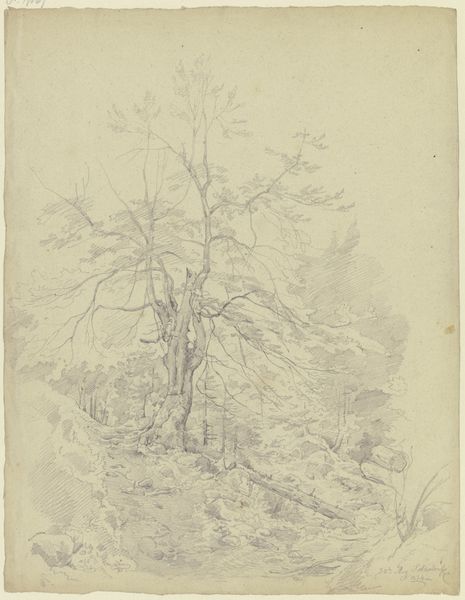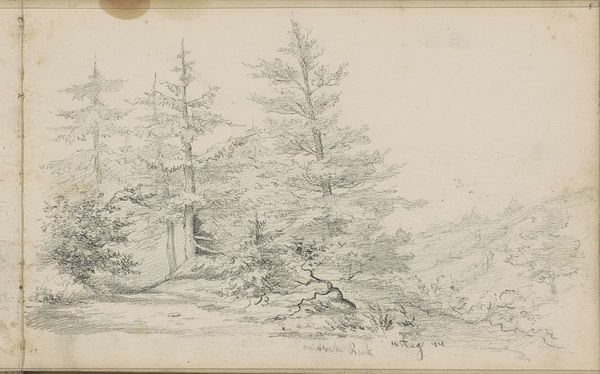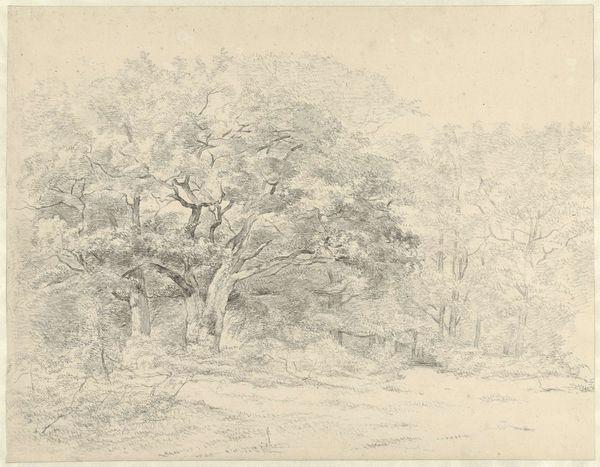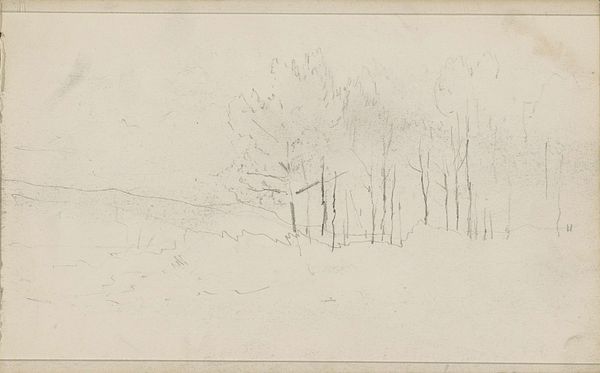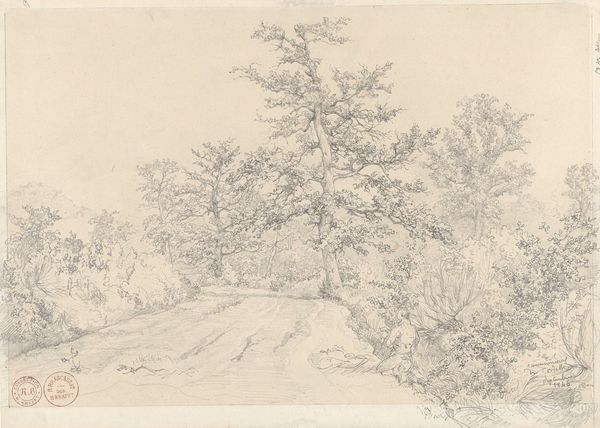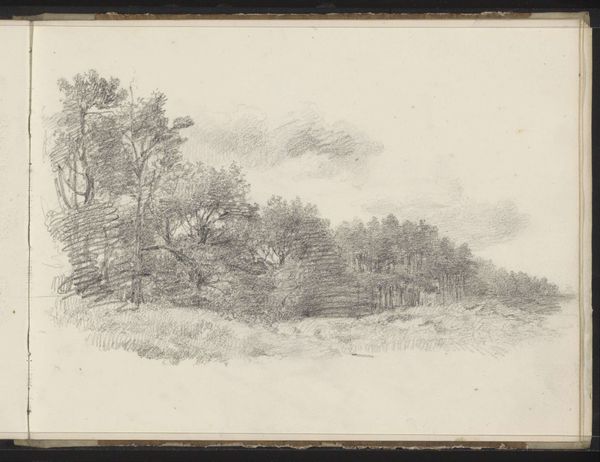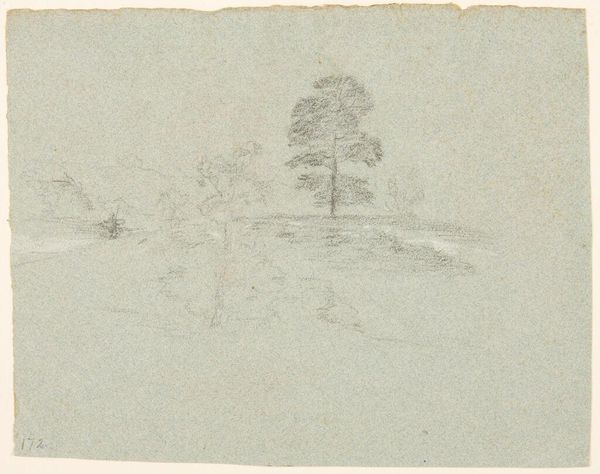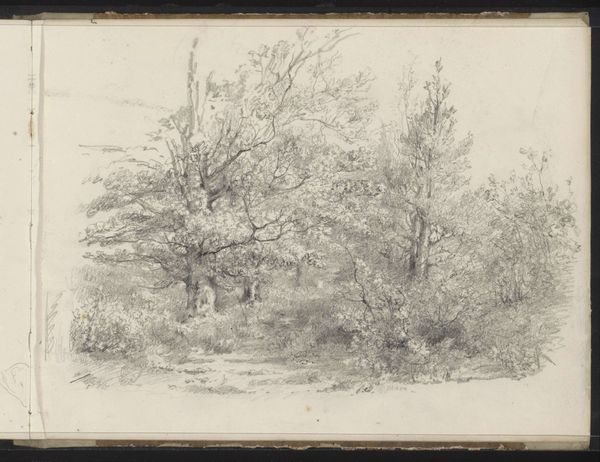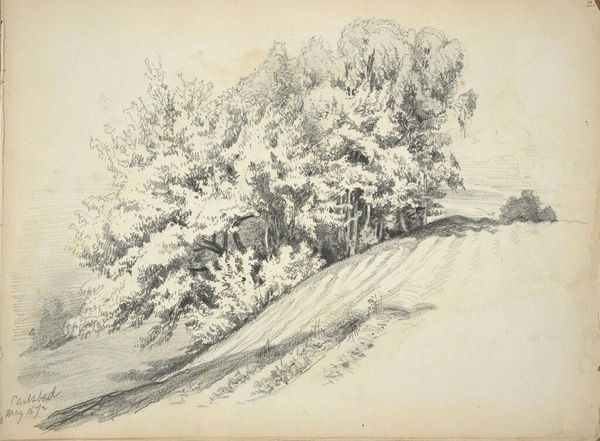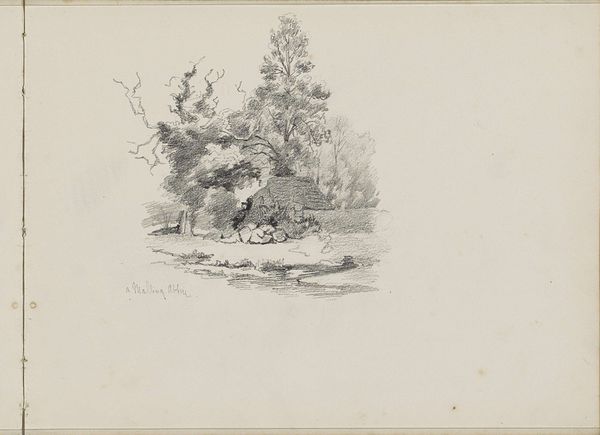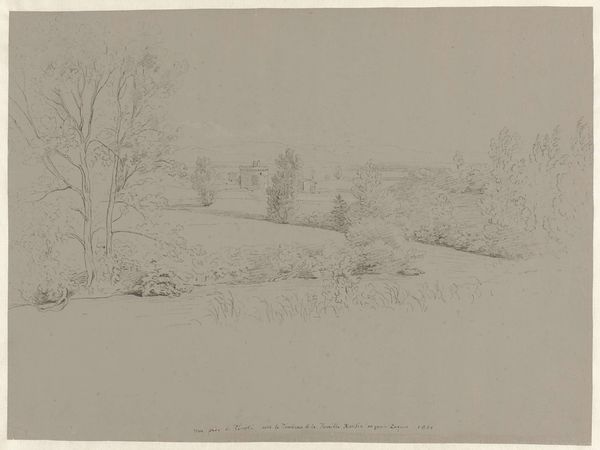
drawing, pencil
#
drawing
#
landscape
#
romanticism
#
pencil
Dimensions: height 320 mm, width 250 mm
Copyright: Rijks Museum: Open Domain
Curator: It is my pleasure to present a subtle landscape study, "Bosgezicht met dennenbomen", or "Wooded Landscape with Pine Trees", crafted with pencil on paper sometime between 1809 and 1837 by Pieter Bartholomeusz. Barbiers. Editor: There's an almost haunting quietude to this drawing; a softness. The pencil work feels very light and hazy. Curator: Indeed. The artist seems most interested in the tonal variations of the woodland rather than distinct form, drawing on the core Romanticist tenets and imbuing the scene with emotion through these very artistic choices. Editor: Looking at the marks themselves, I see Barbiers favors short, almost frantic, lines in his rendering. What strikes me is how this particular handling speaks to the repetitive, labor-intensive act of draftsmanship. It moves beyond mere representation to highlight the materiality of pencil on paper, and how the drawing material shapes the overall experience. Curator: That interplay is fascinating. How the limitations of pencil somehow elevate the composition. I wonder, do you think this piece is complete, or preparatory? Editor: It is interesting that you ask. While some scholars might consider the lack of tonal range in the gray values and shading as somehow inferior to other drawing media like ink or wash. In fact, I feel that this pencil drawing serves as a potent index of material conditions. You could feel as if it lacks an ultimate finish, it feels closer to production, which some may find off putting but it is in fact incredibly genuine. Curator: Absolutely. There’s an almost dreamlike quality. In the almost translucent nature of the layering, he establishes spatial recession. His choices guide us through the landscape. Editor: A reminder, perhaps, that even the most “finished” works are just stops along a continuum of process and creation. It’s right here on display! Curator: Indeed. It is truly inspiring to find ourselves considering the landscape, not just for its representational value, but for the story the materiality tells us. Editor: Agreed. It reminds us to consider art making through the eyes of the laborer, or artist and to consider their hands when studying the image.
Comments
No comments
Be the first to comment and join the conversation on the ultimate creative platform.
